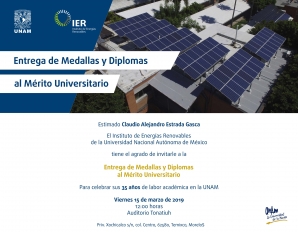J. D. Macias, R. A. Gutiérrez-Razo, H. D. Garcia-Lara, F. Cervantes-Alvarez, J. Bante-Guerra, O. Ares-Muzio, H. Romero-Paredes, Noel León Rovira, C. A. Arancibia-Bulnes, H. I. Villafan-Vidales, V. Ramos-Sánchez, and J. J. Alvarado-Gil
Abstract
Solar technology operating at elevated temperature conditions demands accurate knowledge of the optical and thermal properties of the materials involved in the construction and operation of solar collectors, reactors, and energy storages, among many others. Thermal energy storage (TES) devices involve successive melting and crystallization processes, which result in high complexity materials where the morphology, composition, and porosity could be highly non-homogeneous. In these cases, contact techniques for determining the thermal properties are highly susceptible and do not provide reliable measurements. It is under these conditions that non-contact photothermal techniques can provide superior performance, because in this case, the heat inducing source is a laser beam and the detector is usually a photodiode or a thermographic camera which are in non-contact with samples.
The materials applied as storage medium in a TES unit can be divided into four groups: metals and alloys, ceramics and glasses, polymers and elastomers, and composites that include natural materials. Soda lime silicate glass recyclable waste is a very promising material for storage medium due to its inexpensive and wide availability. In this paper, we examined soda lime silicate glass-graphite composites for use as storage medium in a TES unit. A simple one-dimensional model for thermal conductivity was developed based on equivalent thermal circuits for series-parallel composite walls, and we found that thermal conductivity values depend on the amount of graphite dispersed into the samples, the porous media, and their structure.
Thermal characterization of soda lime silicate glass-graphite composites for thermal energy storage

